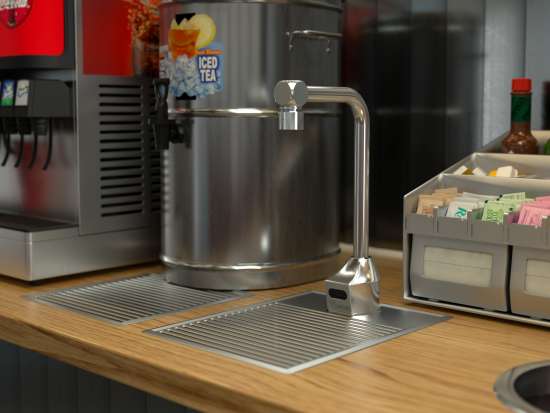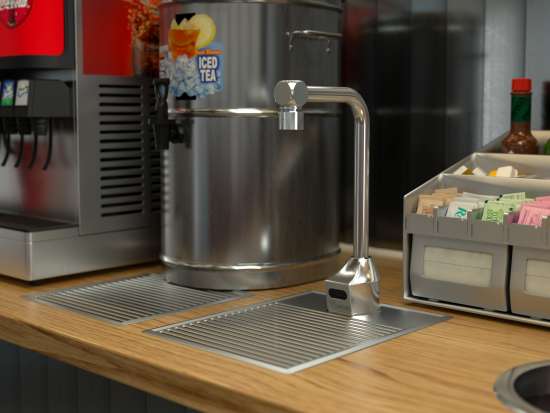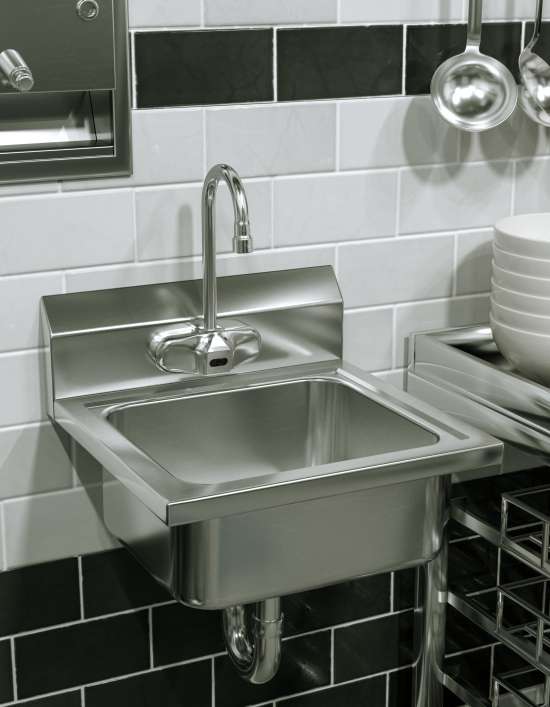Hands-free is here to stay. Here’s how restaurants can get ready
Articles

The early days of the pandemic and the concern that the coronavirus could be transmitted through physical contact made us scared to touch anything - from the groceries we bought to the door handles we reached for.
Although our understanding of how the coronavirus is transmitted has improved, society at large had already developed a new shared anxiety about the potential germiness of the surfaces we come in contact with every day.
This shift in perspective means that some of the early transmission fears have morphed into an overall heightened germ awareness. What started as a race to install hands-free devices for safety has graduated into a broad, sweeping transition as facilities seek to meet public demand for cleaner experiences.
For obvious reasons, this cleanliness urge is further increased in places where food is consumed. Increasingly, the general public expects restaurants to provide a hygienic environment that helps them feel safe. A Datassential survey revealed that 76% of consumers believe restaurant cleanliness and food safety will always matter more than before the pandemic.
This public pressure compels restaurants and other dining locations to focus on improving their facilities. Hands-free is here to stay in many public places.
Here are some considerations for restaurants to boost their hygiene bona fides with touchless plumbing options:
Where to make the switch
High-touch restroom fixtures like faucet handles and toilet flush handles are the most commonly sought locations for installing hands-free fixtures. Bathrooms are obviously ripe for contamination, and reducing contact with surfaces in these areas can make a significant impact in both the transmission of germs and the public perception about your facility.
To make the switch, select fixtures that can be easily retrofit onto existing installations, like T&S ChekPoint sensor faucets. Converting to a battery-powered electronic faucet can be done in just a few steps and without requiring special hardware or alterations to the sink.
Don't forget back-of-the-house options, like hand sink faucets, for the switch to hands-free. These are often within sight of the customers and can contribute to an overall impression of cleanliness - not to mention supporting increased food safety by reducing the risk of hand recontamination.
Less commonly addressed but also important to consider is anywhere water is dispensed.
Sensor-operated glass and bottle fillers from T&S allow customers to fill water bottles or glasses without making contact with a nozzle or other activator - either with their hands or the side of their glass. These can be placed at or near drink stations to allow guests to access water with a simple wave of their hand.

Special considerations for restaurants
Restaurants seeking to convert to hands-free options should consider a few application-specific needs.
For instance, most back-of-the-house sinks have a two-hole configuration, whereas sensor faucets are typically installed via a single mounting shank that is suitable for one- or three-hole applications. It's important to find a retrofit options that is designed to safely and correctly fit.
To address this problem, T&S introduced a specially designed sensor faucet, the EC-3105, which was created for the foodservice industry to allow operators to make the switch to hands-free without requiring a sink reconfiguration.

Operators should also consider the durability of plumbing fixtures. Workers in high-volume, fast-paced kitchens can be hard on faucets and other plumbing. Lower-quality or residential-style faucets can wear out quickly in these environments and develop leaks or fail entirely.
Select high-quality, commercial-grade products to ensure a long life.
Step it up with more options for boosting hygiene
Beyond traditional faucet upgrades, there are other ways to improve hand hygiene within restaurants.
Portable handwashing stations from T&S allow operators to provide hand hygiene facilities beyond the restrooms. These portable stations, available with manual of hands-free sensor faucets, can be placed near entrances or in dining areas to provide a visual cue and convenient access for diners to wash their hands.

For a more low-tech approach, knee or foot pedal valves offer an easy-to-use option for hands-free cleaning. Users can simply step on a foot pedal valve or depress a knee valve to start water flowing, allowing them to avoid touching handles or surrounding surfaces like sinks or countertops.
See this infographic for more ways T&S can help boost hygiene and safety.







